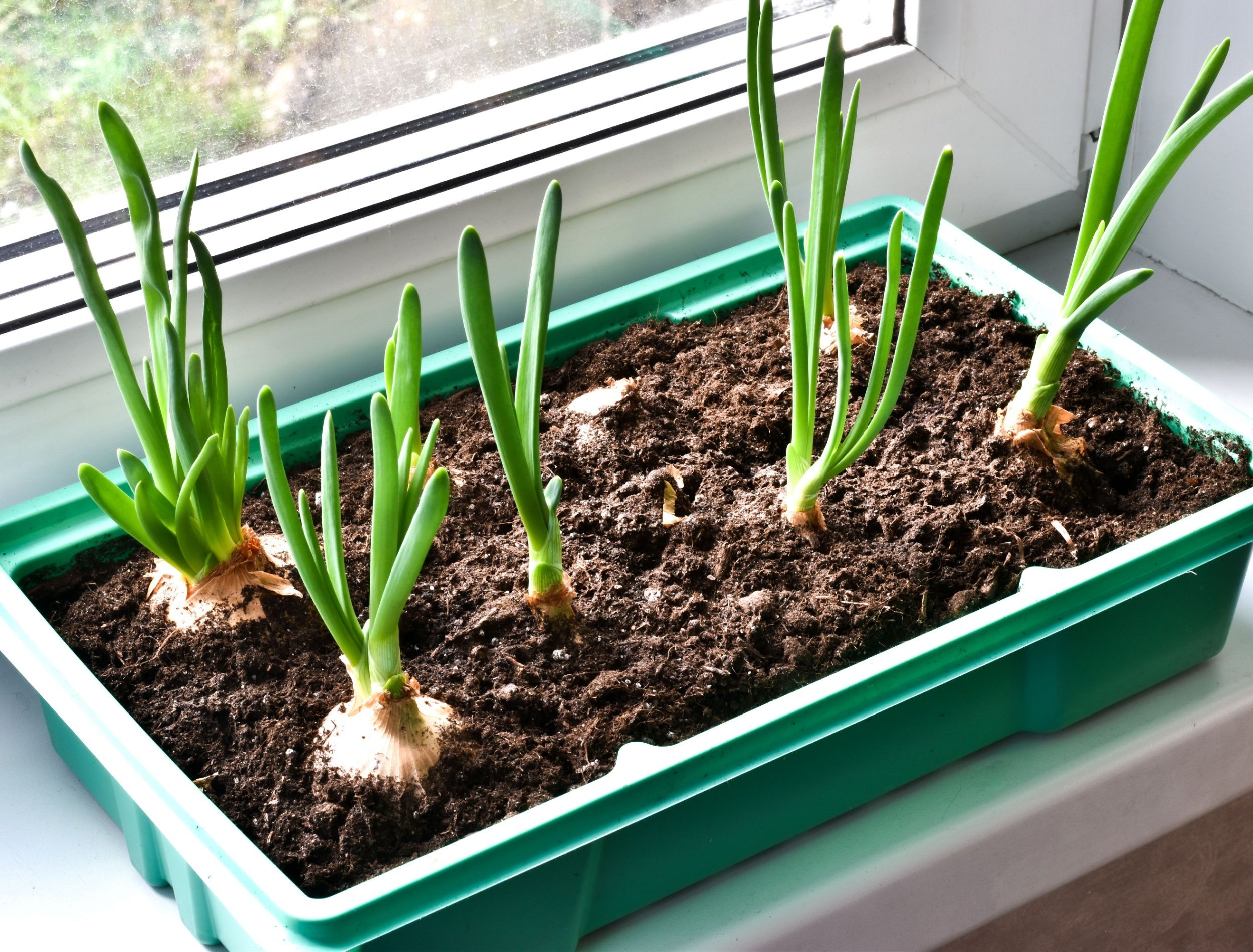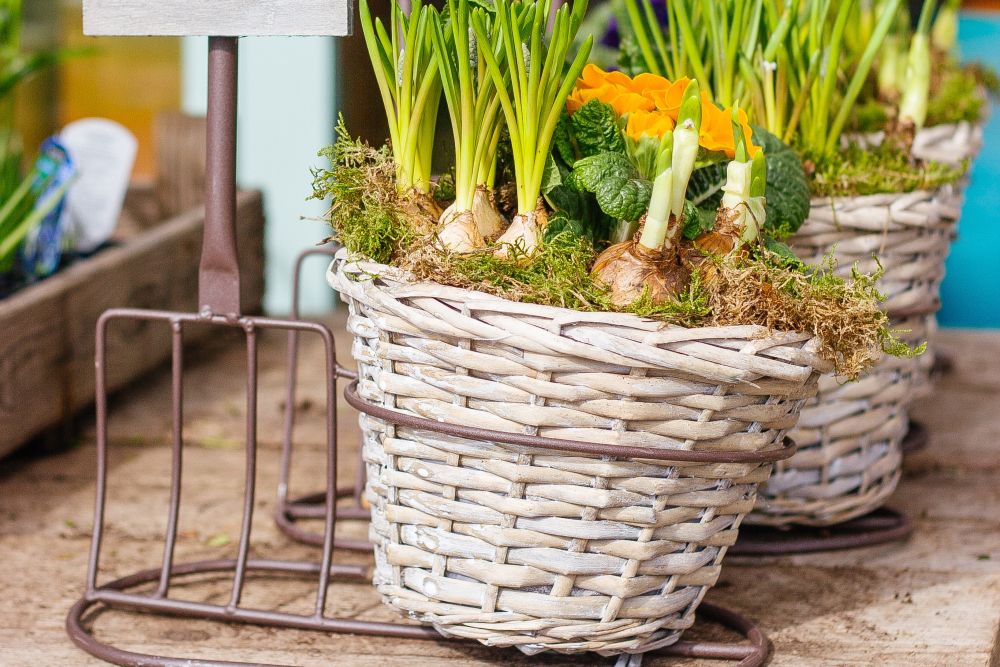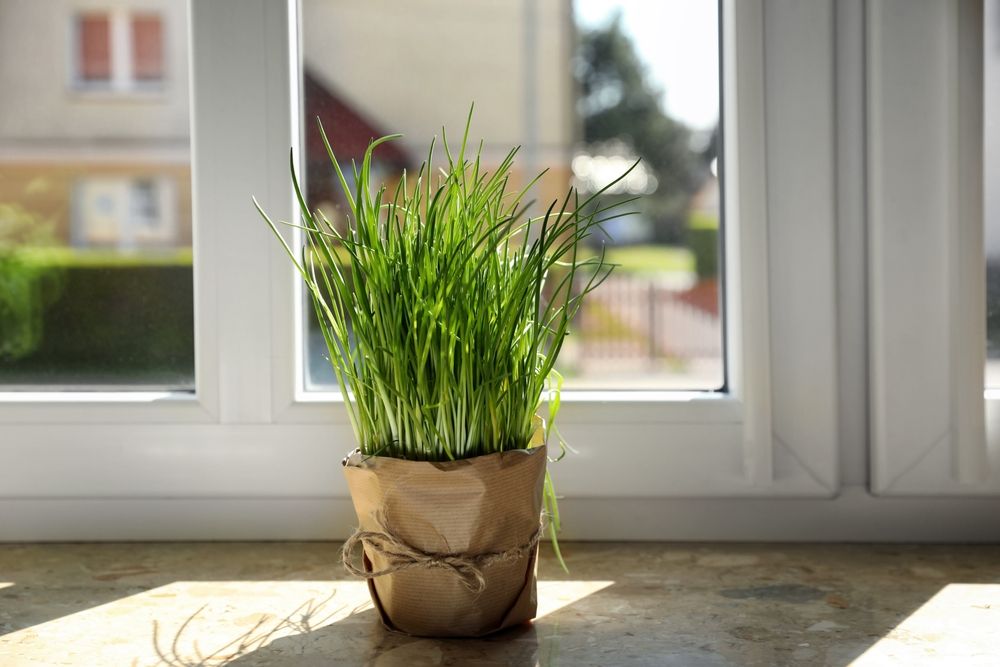There's nothing quite like the taste of a freshly harvested onion. While most onions are grown outdoors, you can grow numerous varieties indoors in pots. It's an excellent option if you have limited outdoor space or want to grow onions year-round. However, with so many types available, knowing which ones are best suited for indoor growing can be challenging.
Discover the best onion varieties to grow at home, including their unique characteristics, growing requirements, and tips for getting the best results. Whether you're a seasoned gardener or just starting, this guide will help you choose the perfect variety for your indoor garden.
How to Choose the Best Onion Type for Growing Indoors
Image Credits: Cathal Mac an Bheatha via Unsplash
One of the most important considerations when choosing an onion variety to grow indoors is the type of onion, determined by its day-length requirements. There are three main types of onions: long-day, short-day, and day-neutral. Long-day onions require at least 14 to 16 hours of daylight to form bulbs, while short-day onions need 10-12 hours. Day-neutral onions are more flexible and can grow bulbs with 12-14 hours of daylight.
When growing onions indoors, pick a variety that matches the light conditions of your home. If you have a south-facing window that gets a lot of sunlight, long-day onions may be the best choice. However, if your space receives less sunlight, short-day or day-neutral onions may be a better option.
Also consider the time it takes for the onion variety to mature. Some can be harvested in as little as 60 days, while others can take up to 120 days or more to reach maturity. You just have to decide how long you're willing to wait.
Finally, think about the flavor profile. Onions come in many flavors, from sweet and mild to strong and pungent, so pick one that best suits your taste preferences. This way none of you harvest will go to waste!
3 Best Onion Types to Grow Indoors
Scallions
Image credits: gerenme via Canva
Scallions, also known as green onions, are a fantastic option for indoor gardening because they don't require much space or sunlight. They have a mild onion flavor and are versatile ingredients in a multidude of dishes. You can grow them from seed or scraps, making them an accessible option for all gardeners.
When growing scallions indoors, choose a pot with good drainage and fill it with well-draining soil. Plant the seeds or scraps about 1 inch deep and water regularly, ensuring the soil stays moist but not waterlogged. Scallions prefer cooler temperatures between 60 and 70 degrees Fahrenheit and indirect sunlight. You can harvest them when the greens are about 6-8 inches tall, which takes about 10 to 12 weeks.
One of the benefits of growing scallions indoors is that they can be grown all year round, providing a steady supply of fresh, homegrown produce regardless of the season. Plus, they are a low-maintenance option for those with limited time or space, making them an ideal choice for indoor gardeners of all skill levels.
Pro Tip: Scallion can thrive in just water! Prop them in a mason jar filled with water and watch them grow. If you choose this option, just know the taste will be less prominent then when grown in soil.
Shallots
Image credits: anuchit tantiwetwuttikul via Shutterstock
Shallots are a type of onion with a sweeter and milder taste, making them a popular ingredient in many culinary dishes. For those with a shortage of outdoor space, cultivating shallots indoors is an excellent choice. First, select a pot at least 6 inches deep and a foot wide.
To grow shallots, start by filling your pot with sandy soil that drains well, and plant the bulbs with the pointed end facing up. Be sure to water your shallots when the soil is dry to the touch, pouring water slowly so it can flow out of the drainage holes. With at least six hours of sun per day, your shallots will thrive, providing fresh and flavorful bulbs in just 90 to 120 days, depending on the variety.
One of the benefits of growing shallots indoors is that they thrive in a relatively small space, as they do not require a lot of room for their bulbs to form. Additionally, since shallots grow in a cluster, a single bulb can produce multiple shallots, providing a more abundant harvest.
Chives
Image credits: New Africa via Shutterstock
Chives are a member of the onion family and are an easy and rewarding herb to grow indoors. They are incredibly versatile and can add flavor to many dishes, from salads to soups.
To grow them indoors, start by filling a pot with well-draining soil rich with organic matter. Then, sprinkle the seeds, pressing them down gently with your fingers. Water the pot regularly and ensure the soil remains moist. Chives need at least six hours of sunlight each day, making a sunny windowsill an ideal spot for them. Harvest your chives once they are about 6 inches tall, and if you cut them about 1 inch from the soil level, they will quickly regrow.
One of the great benefits of growing chives indoors is that they are a low-maintenance option for even the busiest gardeners. They are also highly adaptable and can be grown in a range of containers, from traditional pots to hanging baskets, making them the perfect addition to your indoor garden.
Life Is Better with a Little Onion
Growing onions indoors is a practical way to enjoy the flavor and benefits of fresh, home-grown produce. With the right onion variety and a few basic growing techniques, you can enjoy a bountiful harvest of this tasty vegetable. While Long Day, Short Day, and Day-Neutral onions have their unique characteristics, scallions, shallots, and chives are particularly well-suited for indoor cultivation due to their compact size and low-maintenance requirements.
Whether you are a seasoned gardener or a beginner, these three types will provide you with an enjoyable and successful indoor growing experience. So give them a try and add a touch of home-grown flavor to your favorite dishes today!





